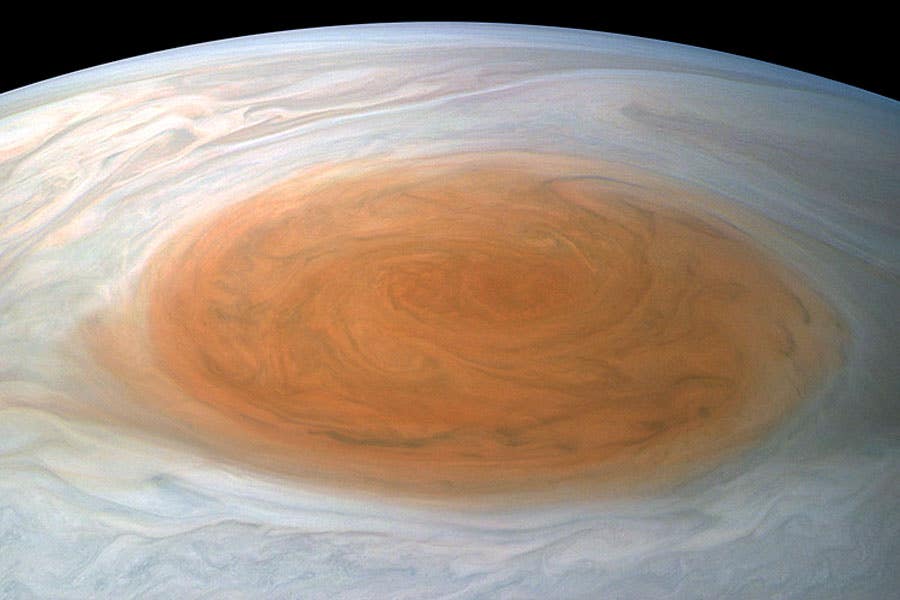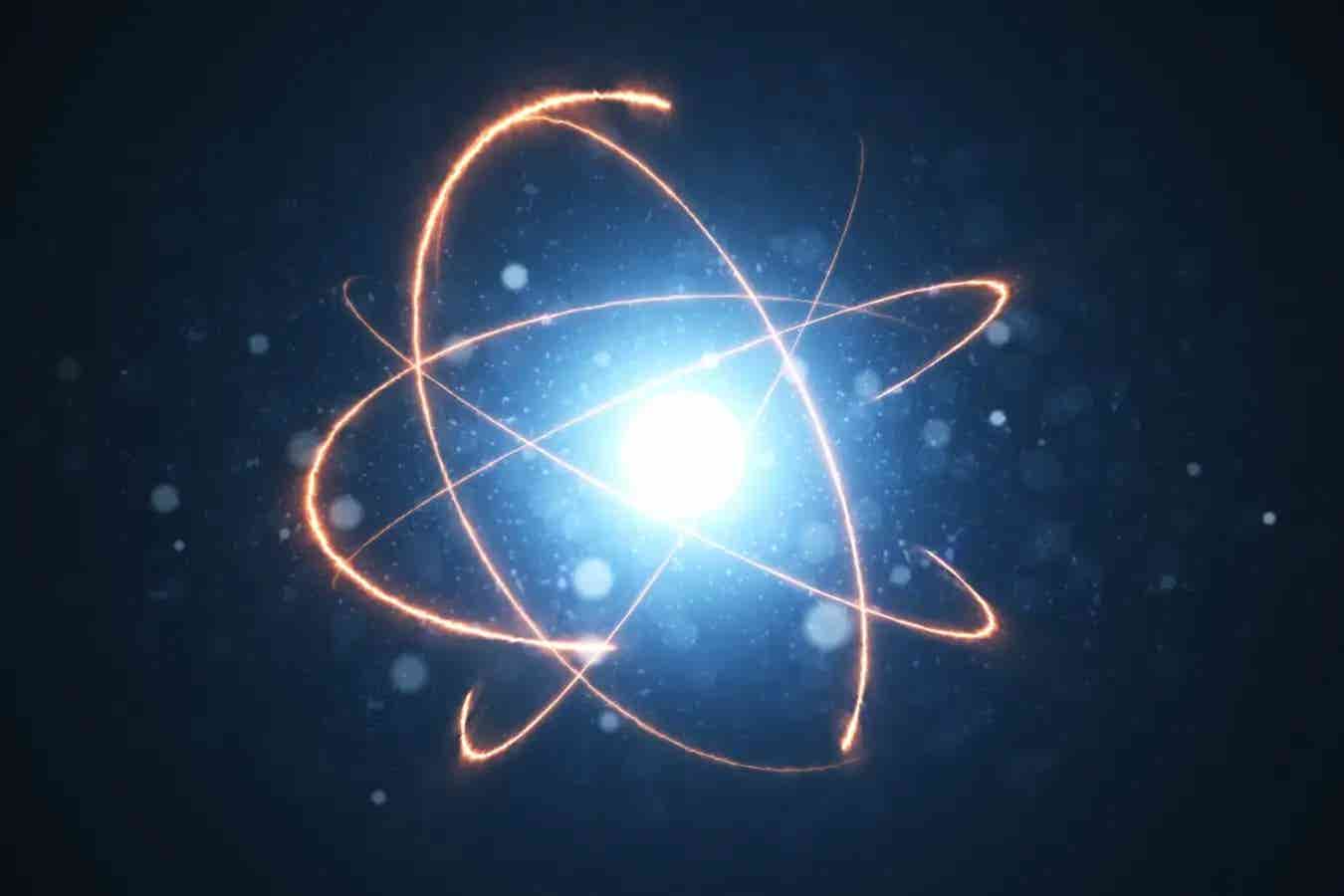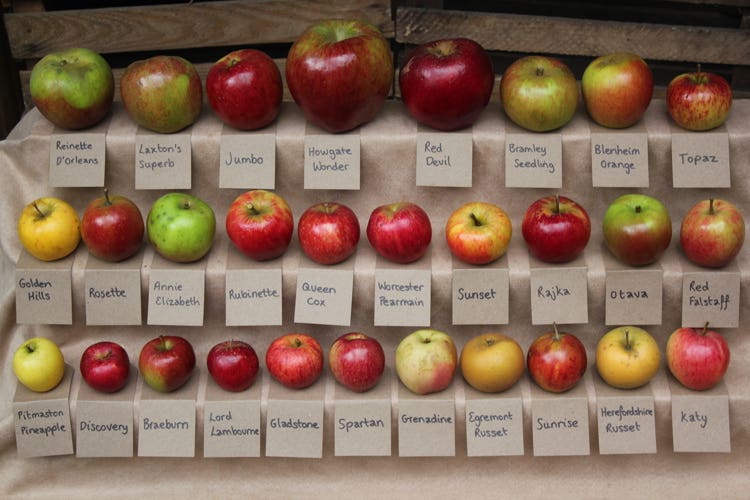Study reveals Jupiter’s great red spot behaves like a stress ball
Hubble’s latest observations reveal the oscillatory behavior of Jupiter’s Great Red Spot, reshaping our understanding of planetary storms.

Hubble’s close-up of Jupiter’s Great Red Spot uncovers surprising oscillations in size and speed, offering new insights into planetary weather dynamics. (CREDIT: CC BY-SA 4.0)
Jupiter’s Great Red Spot (GRS) has fascinated astronomers for over 150 years. This massive storm, large enough to engulf Earth, offers a glimpse into the dynamic and extreme conditions of planetary atmospheres. Recent observations from NASA’s Hubble Space Telescope reveal new mysteries, showcasing how much we still have to learn about this iconic Jovian feature.
Published in The Planetary Science Journal, Hubble’s close-up look at the GRS between December 2023 and March 2024 has uncovered unexpected oscillations. Over this 90-day period, the storm's size and speed exhibited periodic changes, challenging our understanding of planetary meteorology.
Amy Simon, a scientist at NASA’s Goddard Space Flight Center, explained, “While we knew its motion varies slightly in its longitude, we didn’t expect to see the size oscillate. This behavior was very unexpected, and at present, there are no hydrodynamic explanations.”
The GRS is an anticyclonic storm, bound by powerful jet streams that prevent it from drifting erratically. Unlike Neptune’s Great Dark Spot, which can shift in latitude or fade away entirely within years, the GRS remains anchored between Jupiter’s eastward and westward jet streams.
These jets compress the storm’s latitude but allow its longitude to oscillate. This periodic behavior is likened to a sandwich where “the slices of bread are forced to bulge out when there’s too much filling in the middle,” as described by co-investigator Mike Wong from the University of California at Berkeley.
Over the past two decades, researchers have observed the GRS shrinking in both length and width. Hubble’s latest data reveal that the storm is not just decreasing in size but also oscillating. Its width and aspect ratio expand and contract, synchronized with changes in its drift speed.
These size oscillations coincide with fluctuations in brightness, particularly in ultraviolet light. When the GRS is at its largest, its core brightens, suggesting variations in haze absorption within the upper atmosphere.
The study of the GRS offers insights into vortex dynamics, a phenomenon common across planetary atmospheres. On Earth, vortices like hurricanes are disrupted by landfall or wind shear, limiting their lifespan to days or weeks. In contrast, Jupiter’s alternating zonal winds stabilize the GRS, allowing it to persist for centuries. This stability is a key factor in the storm’s longevity and unique behavior.
Related Stories
The oscillations observed in the GRS align with principles of fluid dynamics, particularly the Kida relation, which describes the balance between a vortex’s aspect ratio and its surrounding wind field. However, researchers noted deviations from this model, suggesting the need for additional factors to explain the GRS’s unique oscillations.
Simon’s team also analyzed changes in the GRS’s internal velocities. Over the 90-day observation period, maximum interior wind speeds varied by about 20 meters per second. This variability, while measurable, did not follow the sinusoidal patterns observed in the storm’s size and drift rate.
Despite decades of study, many questions remain about the GRS. The storm’s longevity, shrinking size, and oscillatory behavior continue to puzzle scientists. Simon noted, “Right now it’s over-filling its latitude band relative to the wind field. Once it shrinks inside that band, the winds will really be holding it in place.” Researchers predict that the GRS will stabilize in size over time, taking on a less elongated shape.
Hubble’s detailed observations highlight the importance of long-term monitoring programs like the Outer Planet Atmospheres Legacy (OPAL). By capturing high-resolution images of Jupiter and other outer planets annually, OPAL provides valuable data for understanding planetary weather systems.
Simon emphasized, “Understanding the mechanisms of the largest storms in the solar system puts the theory of hurricanes on Earth into a broader cosmic context.”
The GRS’s oscillations not only deepen our understanding of Jupiter’s atmosphere but also offer a framework for studying weather patterns on exoplanets. The dynamics observed in Jupiter’s storm systems can inform models of atmospheric behavior on distant worlds, helping scientists predict conditions on planets beyond our solar system.
Future observations will aim to identify additional parameters influencing the GRS’s oscillatory behavior. Advanced imaging techniques may uncover more about the storm’s internal structure and interactions with surrounding jet streams.
As Simon’s team continues their work, the GRS remains a vivid reminder of the complexities of planetary science and the power of modern astronomical tools.
Note: Materials provided above by The Brighter Side of News. Content may be edited for style and length.
Like these kind of feel good stories? Get The Brighter Side of News' newsletter.
Joshua Shavit
Science & Technology Writer | AI and Robotics Reporter
Joshua Shavit is a Los Angeles-based science and technology writer with a passion for exploring the breakthroughs shaping the future. As a contributor to The Brighter Side of News, he focuses on positive and transformative advancements in AI, technology, physics, engineering, robotics and space science. Joshua is currently working towards a Bachelor of Science in Business Administration at the University of California, Berkeley. He combines his academic background with a talent for storytelling, making complex scientific discoveries engaging and accessible. His work highlights the innovators behind the ideas, bringing readers closer to the people driving progress.



